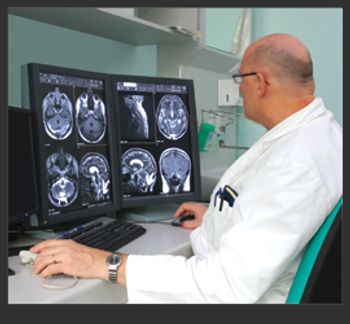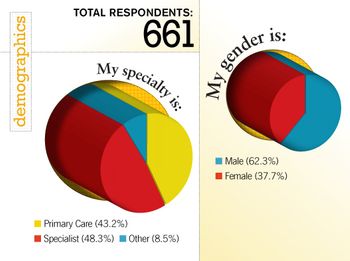
Physicians used significantly lower radiation doses for cardiac CT angiography when weekly dose reports provided feedback on the tests performed.

Physicians used significantly lower radiation doses for cardiac CT angiography when weekly dose reports provided feedback on the tests performed.

The average salaries of radiologic technologists rose by only 1.7 percent in the last three years - a far slower growth than in previous periods.

The use of electronic health records cut the cost of outpatient care, including radiology, by 3 percent, compared with the use of paper records.

Too many CT scans are still performed on children complaining of headaches.

CMS’s proposed hospital outpatient payments for 2014 would cut reimbursement for CT and MRI studies by 18 percent to 38 percent, according to the ACR.

Radiologist workstations have more bacteria than do nearby toilet seats and doorknobs.

If radiologists want to be involved in making decision regarding medical imaging tests, they will need to step up and make themselves heard.

Using a half dose of contrast with 3-T MRI for patients with early rheumatoid arthritis shows identical image quality as full-dose.

Medical imaging policy should not depend on spending alone, as evidenced by a decrease in imaging tests performed, while costs stay steady or rise.

CT angiogram monitoring of patients with cerebral aneurysms helps identify if and when the aneurysms grow, increasing the risk of rupture.

Siemens Healthcare has received FDA clearance for their MAMMOMAT Inspiration Prime Edition lower dose mammography system.

iPads are helping radiology residents learn by providing access to online journals and texts, but they still have not become essential work tools.

Using PET to stage patients with limited-stage small-cell lung cancer before treatment improves survival rate.

How does your salary and work hours compare? How happy are you with your career choice? Find out what radiologists, administrators, technologists, PACS/IT managers, students and residents think in our 2013 Radiology Compensation Survey.

Nuclear medicine and MR technologists recommend regulations around education, certification and staffing for the new hybrid technology.

Radiology tests in emergency departments are most often requested by the patients, not the ordering physicians.

Siemens Healthcare has received FDA clearance for its Virtual Touch imaging ultrasound application.

Carestream received FDA clearance for a new wireless digital radiography detector designed for low-dose pediatric exams.

Most Americans say they would undergo radiologic imaging - and pay more - to receive a diagnosis, even if no cure or treatment was available.

Contrast-enhanced MR imaging can find undiagnosed infection at the site of contaminated spinal injections.

Harvey L. Neiman, MD, FACR, head of the American College of Radiology, announced this week plans to retire as CEO next spring.

Using MRI to obtain two measurements in the abdominal aorta may help physicians predict which patients may go on to have a cardiac event.

Radiologists who communicate well with patients before and after breast biopsies can help lower patient anxiety levels.

Sharing data across health information exchanges does not result in significant cost savings despite some reductions in test ordering.

PET images may help determine which patients with major depression will respond best to medication or to cognitive behavior therapy.

PET finds hypometabolism in healthy brains that may indicate pre-Alzheimer’s disease.

PET imaging aids researchers in search for anti-nicotine vaccine, but shows there is still a lot of work to do.

CMS has agreed to cover three oncology FDG-PET scans, a revision from the proposed single-scan coverage, and one PET advocates lauded.

SPECT/MR debuted this week at the SNMMI annual meeting as a new preclinical hybrid molecular imaging system with promises of higher resolution and lower dose.

Cardiac MRI can cut adverse events among patients with possible ACS, shortens hospital stays, and better identifies patients requiring invasive procedures.